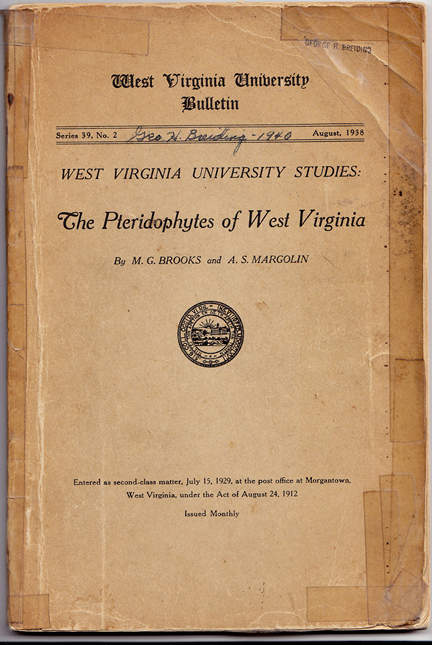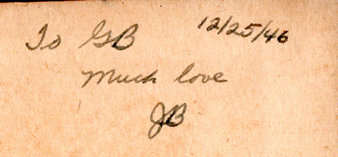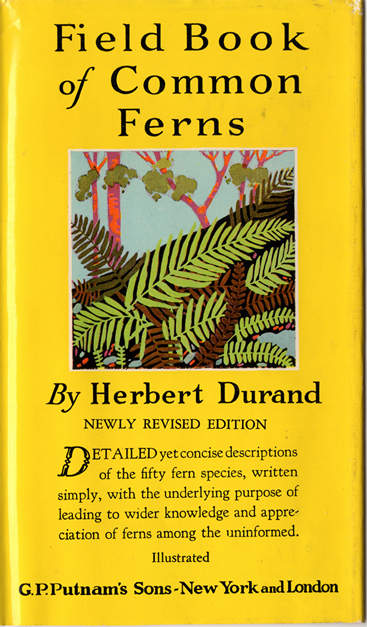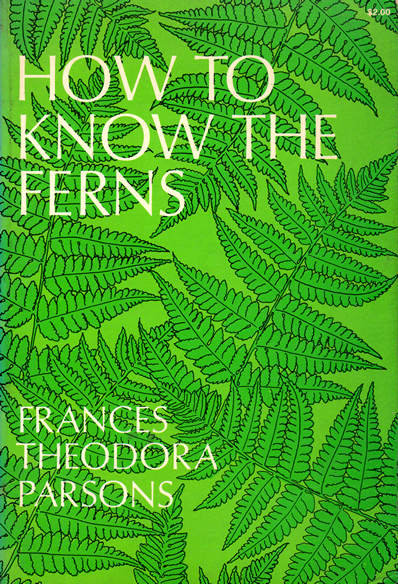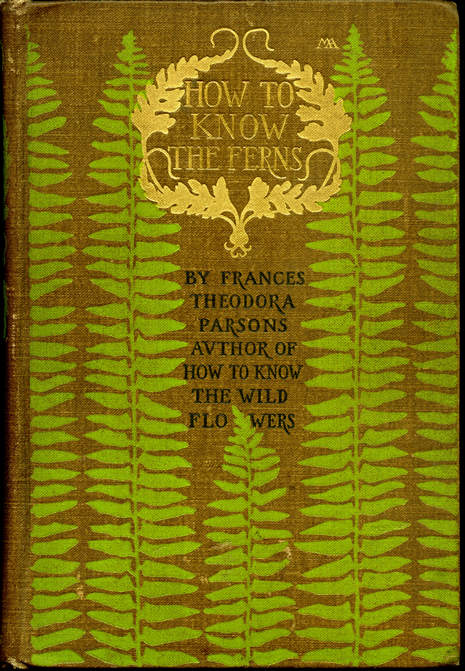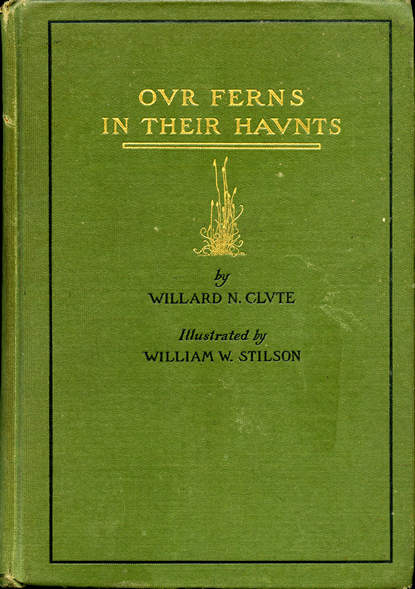Mike Breiding's Frond Fondling Site: www.FrondFondler.us
Welcome to FrondFondler.us
A Site about Ferns and Fern People
You will find a hodgepodge of Fernabilia here
=============================================
D - R - A - F - T D - R - A - F - T D - R - A - F - T
=============================================
Why FrondFondler.us?
A number of years ago long time friend Bob Burrell (1933 - 2012) started using "Frond Fondler" as a nickname for me because of my love of ferns and fern people.
The name stuck and so I decided to register the domain FrondFondler.us.
This site has sat dormant for many years and I was finally inspired to try to make something of it.
With the exception of the first two images:
Click for a larger image
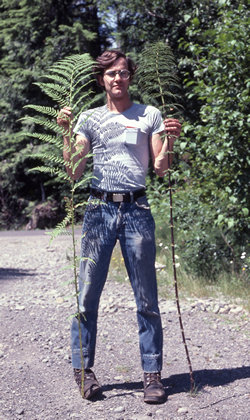
Mike Breiding - 25
Frond Fondling in the
Hoh River Rain Forest 1977
Photo by George H. Breiding (1917 - 2007)
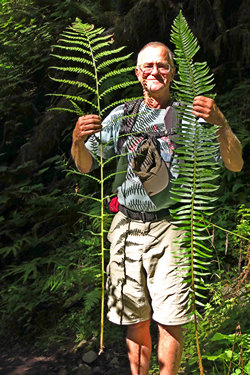
Mike Breiding - 62
Frond Fondling in the
Hoh River Rain Forest 2014
Photo by Betsy Breiding
How I Learned the Ferns:
The start of a life long Love Affair
In 1974 I was rummaging through some books in my dad's library at 616th 8th street in Morgantown, WV.
At some point during my rummaging I came across a slim volume the title of which I was not quite sure how to pronounce.
Paging through it, I found illustrations of plants which were not familiar to me. Although the plants looked different from each other, there seemed to be a common shape to most of them.
This unfamiliarity with these plants may seem strange considering I grew up exploring the hills and dales of Oglebay Park where the family lived in a park house. The house came with the position of Park Naturalist in which capacity my dad, George H. Breiding served for 13 years.
But, being the constantly on the go kids we were, our attentions were focused mostly on things which moved - butterflies and moths, frogs and toads, salamanders and snakes, water skippers and crawdads. And of course - birds.
As children we learned the common plants and could name most of them. But they held little interest for us as we could not chase them with butterfly nets, get our hands covered in slime or do battle with giant crawdads which we chased through the shallow waters of Poughs Run.
Then in 1963, when we left Wheeling and our beloved Oglebay Park behind, we soon became distracted by "Big City" diversions. Yes, we were leaving that sheltered life behind and moving to the Big City - Morgantown, WV.
Here we would move into an old stucco three story house (616 8th St.) on a street, not a rural route. And we would be able to easily walk the 1.5 miles to downtown Morgantown and Walter's News Stand for comics and candy bars.
When we lived in Oglebay downtown was 4 miles away from hour house at 350 GC&P road in Oglebay Park, ao wwe visited downtown Wheeling only once or twice a year. And they were always big events - Christmas shopping, or a visit with Grandma and a trip to the lunch counter at G.C. Murphy for a delicious roast beef sandwich smothered in a rich, dark brown gravy.
Although 6 years of Big City diversions in Morgantown which were followed by 4 years in San Francisco did not completely erase all the natural history I had learned as a child, it did much to dampen my interest and dull my memories.
But once I had in hand that slim volume, plucked from a box in my dad's library, those old interests began to be revived.
I can still remember taking that little book to my dad and asking: "What does this word mean?" That word was "Pteridophytes" and the book title was "The Pteridophytes of West Virginia" by Maurice Brooks and A.S. Margolin, published by West Virginia University in 1938.
Cover of "The Pteridophytes of West Virginia"
by Maurice G. Brooks (Author), A.S. Margolin (Illos)
West Virginia University Studies, Series 39, No. 2, August, 1938
My dad pronounced the word for me and told me a Pteridophyte was another name for a fern.
And with that - a fern lover was born.
At some point my dad showed me his copy of the Flora of West Virginia, specifically Vol.1 which included the ferns and fern "allies". It made use of the same illustrations as The Pteridophytes of West Virginia but had updated information on the species, hybrids and distribution.
Cover of "The Flora of West Virginia - Part 1"
by P. D. Strausbaugh and Earl L. Core
Second edition, 4 vols. Morgantown: West Virginia University, 1970-77.
Earl Core (January 20, 1902 – December 8, 1984) and his wife Freda lived in the same neigborhood as my dad and I and we would often see him walking to or from Brooks Hall where he maintained an office as Professor Emeritas. He was a kindley and humble gentleman who always had time for anyone who stepped into his office - including me. He along with Roy Clarkson and Betty Bartholomew (June 14, 1912 – March 15, 1985) of the wVU Biology Department were full of encouragement and help as I tried to lears the ferns.
My dad then showed me two other books he had in his library.
The older one was entitled "Field Book of Common Ferns" by Herbert Durand.
This smallish, hard covered volume (a first edition - 1928) had the following inscription on the inside end paper: "To GB Much love JB 12/25/46". This would seem to indicate my mom had given him the book as a Christmas gift in 1946.
Durand's book was first printed in 1928 with revised editions running through the 1940s.
Cover of "The Field Book of Common Ferns" by Herbert Durand, 1928 ed
Another book my dad showed me was entitled "A Field Guide to the Ferns and Their Related Families" by Boughton Cobb. This volume was Number 10 in the celebrated and well known Peterson Field Guide Series. With the exception of one other book (see below - Wheery) Cobb's book was considered to be the definitive fern guide for the northeastern United States. And the beautiful illustrations by Laura Louise Foster made it a pleasure to use and peruse. Illustrations?.
Cover of "A Field Guide To the Ferns and Their Related Families" by Boughton Cobb, 1963 - 7th Printing
Cobb's Fern book was first printed in 1956. I purchased my own copy at some point. It was the 7th impression printed in 1963. No date of purchase but the dust jacket has the price of $5.95. The end paper has my address as 616 8th Street so it must have been purchased in the mid 70s.
With these three books to peruse, ponder and marvel over, I was on my way to becoming a "fern freak". It was not long before I started seeking out more fern books for my own library.
Now that I had some fern guides to help with identification it was time to go fern hunting - and hunt I did!
Before I got interested in ferns my main reason for a walk in the woods was to find, enjoy and sometimes photograph native wildflowers. But, once I got bit by the fern bug mere flowering plants to a back seat to my interests.
When I got stuck on identifying a fern I would collect a specimen to bring home to my dad to look at. He would usually set me on the right track, but sometimes he was unsure and then we hit the books for some help.
Occasionally I went on walk with my dad and we would examine and talk about the ferns we found. Being a Naturalist he had some good teaching methods to help others interested in Nature leard and remember plants, birds, insects, ect.
For the ferns he had some good memory joggers such as how to remember the Christmas fern - the pinnules are shaped like little Christmas stocking and the fronds are wintergreen and can be seen at Christmas time.
The New York fern was another one, it is a fern which sharply tapers at both ends. "Like a denizen of New York City who burns the candle at both ends. A bit nonsensical but it helped me remember the name.

Mike Breiding - 25
Frond Fondling in the
Hoh River Rain Forest 1977
Photo by George H. Breiding (1917 - 2007)

Mike Breiding - 62
Frond Fondling in the
Hoh River Rain Forest 2014
Photo by Betsy Breiding
One the first "collector" fern books I purchased was entitled "How to Know the Ferns: A Guide to the Names, Haunts, and Habits of our Common Ferns" by Frances Theodora Parsons. Her book had been reprinted by Dover Publications. Dover specialized in low cost reprints of out of print books which targeted academic types and bibliophiles.
The softbound Dover edition was printed in 1961 and sold for the exorbitant price of $2.00.
Once I discovered Dover, I was like a kid in a candy store!
At some point I was able to purchase a copy of every fern book which was in print during the 1970s. So I decided to seek out more fern books by scouring used books stores anywhere I went and also acquiring the catalogs of natural history book dealers. Remember - this was pre Internet. Every purchase had to be made in person, over the phone or with hand written orders sent through the mail. Yes, this was the dark ages.
One of the used fern books I came across was an original copy of the Frances Theodora Parsons book mentioned above. My, how different the original Charles Scribner's Sons volume is from the utilitarian edition published by Dover.
My copy, a first edition, was published by Charles Scribner's in 1899. It has a brown cloth cover with green ferns embossed into it and the title is gold gilt. Very classy and not atypical of books published in that era. In 1906 it was listed in Vol XVII №2 (April 1909) of the Willard Clute's "Fern Bulletin" for $1.60. According to various online based inflation calcualtors $1.60 in 1906 is worth $47.86 in 2021. Not a book for commoners!
The edition of Parson's book I had been lucky enough to acquire in January of 1978 cost me all of $6.00. According to the inscription on the end paper, the original owner was one Neota A. Johnson of E. Eadington, Maine. She took possession of the book in August of 1899
Then at some point I came across this title listed in one of the catalogues: "The Ferns of Kentucky" by John Williamson. It was published in 1878 by John P. Morton & Co., W. Main Street, Louisville, KY.
I did not know it at the time this was the first handbook on ferns published in the United States.
I purchased this book in 1981 for $15.00 from the Bryn-Mawr Bookstore in Pittsburgh, PA. Bryn Mawr-Vassar Bookstore was located at 4612 Winthrop Street. The store is now closed.
Then I found a copy of Willard N. Clute's "Our Ferns in Haunts". This scholarly tome published in 1901 by Frederick A. Stoke Company was the prominent and dominant fern book of its day. At 332 pages and over 150 illustrations, it was the most complete treatment of the fern flora of the United States which was intended for the layman.
Clute was a big shot in the world of ferns and quite opinionated and outspoken.
He founded the American Fern Society and was editor of The Fern Bulletin, the original publication of the American Fern Society (originally called The Linnaean Fern Bulletin), and of The American Botanist.
Now I was on a roll! There were many other books to be sought out and acquired. But, that story is to be continued at a later date
Revised: 20 July 2012 / 03 July 2015 / 19 June 2021
And, while you are here you might want to check out EpicRoadTrips.us
